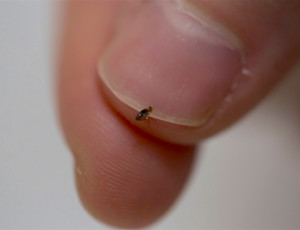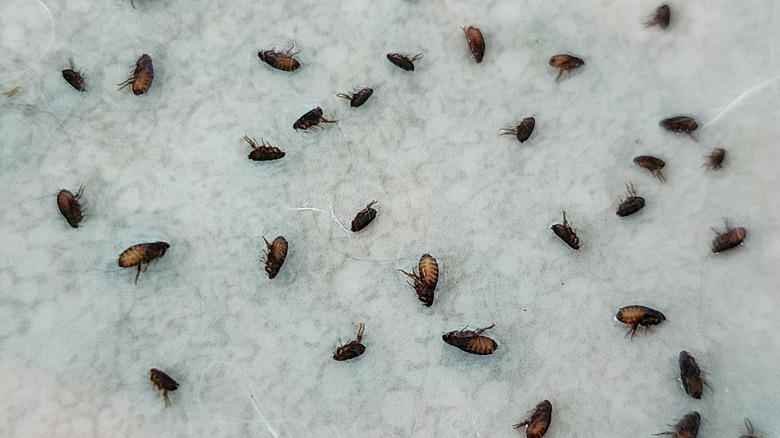Florida’s subtropical setting—featuring warm temperatures, mild winters, and elevated humidity—attracts countless residents and visitors, yet these same conditions also welcome certain persistent pests, especially fleas. These minuscule insects target warm-blooded animals like cats and dogs, feeding on blood and occasionally biting humans if alternatives are lacking. In Fort Lauderdale, alongside neighboring Plantation, ignoring subtle flea activity can escalate from a minor nuisance to a widespread infestation, resulting in restless pets, itching occupants, and potential disease concerns if not handled promptly. This service page details how fleas thrive in Florida’s environment, the indicators that signal their presence, and why engaging a professional flea exterminator for flea treatments is the most thorough way to reclaim a comfortable, pest-free property. Early occupant detection—like noticing incessant pet scratching or tiny black specks around floors—saves you from extended discomfort, repetitive bites, and possibly more expensive remediation steps later.
Why Fleas Thrive in Florida

- Mild Winter Temperatures
In cooler states, sub-freezing weather often disrupts or kills off fleas for months, offering a natural break in their life cycles. Florida’s winter rarely remains below freezing long enough to hamper flea reproduction, so fleas remain active nearly all year if occupant or property manager vigilance slackens. Indoors, occupant-controlled heating or air conditioning stabilizes temperatures in a range fleas favor, making it simpler for them to feed and multiply. - High Humidity and Rain
Flea eggs and larvae require moisture to develop properly. Florida’s regular showers, humid air, and moisture-laden yards supply fleas with the damp conditions they rely on. In shady, damp spots—like under shrubs or along fence lines—flea eggs hatch successfully, waiting for a cat or dog to brush by. If occupant yard maintenance (like removing leaf litter) or dryness improvements are lacking, fleas can build up quickly. - Minimal Seasonal Dormancy
In more temperate regions, fleas might partially reduce activity during severe winter cold. But in places like Fort Lauderdale or Plantation, mild winters rarely impose such dormancy, letting fleas breed incessantly. A small infiltration left undetected can rapidly spawn new generations, stressing occupant or caretaker efforts to keep fleas under control unless occupant or staff detects them swiftly. - Frequent Pet and Wildlife Hosts
Fleas live off warm-blooded animals—predominantly dogs and cats, but also raccoons, possums, or stray animals crossing yards. Unprotected pets lacking monthly flea preventatives risk bringing fleas indoors, where adult fleas jump onto carpets or bedding to lay eggs. Without occupant checks—like combing pets or vacuuming regularly—these eggs hatch, spawning new adults that continue feeding and laying more eggs. - Frequent Movement of People and Goods
In bustling areas like Fort Lauderdale, occupant transitions—short-term rentals, secondhand furniture trades, or simple traveling with pets—can unintentionally transport fleas to new locations. A single infested blanket or personal item might deliver fleas to carpets or pet resting spots, fueling an outbreak if occupant synergy—like laundering or vacuuming—does not spot them initially.
Telltale Signs of a Flea Infestation
- Persistent Pet Scratching or Grooming
One of the early indicators is a dog or cat continually biting its skin, especially near the belly, neck, or hindquarters—common flea feeding zones. Pets may lose hair, develop red patches, or become agitated. Checking your pet’s coat with a flea comb often reveals adult fleas scurrying about or little black specks (“flea dirt”) that turn red when dabbed with water, confirming feeding. - Fleas Leaping on Floors or Furniture
Adult fleas measure roughly 1–3 millimeters and can jump several inches. If occupant footsteps unsettle them, you might catch brief glimpses of small black insects hopping off carpets or couch cushions. Spotting a couple indicates more likely exist deeper in fabrics or yard corners, requiring occupant or professional attention. - Flea Dirt in Pet Bedding
Flea droppings resemble coarse black pepper collecting where pets sleep—rugs, blankets, or crates. Testing them on damp white tissue to see a red/brown smear verifies digested blood, signifying active fleas feeding on your animal companions. - Unexplained Bites on Humans
Though fleas prefer animals, they will bite people if animals are unavailable. Human flea bites typically appear around ankles or lower legs as small, red itchy welts. Occupants finding such bites—despite minimal exposure to mosquitoes—should suspect fleas lurking indoors or in yard spaces. - Pets Avoiding Usual Spots
A dog or cat abruptly avoiding a favorite bed or corner could hint at fleas congregating there. Investigating that space might reveal adult fleas or eggs. Occupant synergy—like washing bedding in hot water or vacuuming the area thoroughly—plus professional yard treatment can disrupt expansions.
Why Rapid Flea Treatments Are Vital
- Potential Disease Transmission
While not as notorious as ticks for disease, fleas can harbor tapeworms that infect dogs, cats, or sometimes humans. Heavy infestations feeding on a small pet may also lead to anemia. Quick occupant or professional eradication reduces such health hazards, sparing occupant worry or costly vet care. - Ongoing Itching and Pet Discomfort
Frequent flea bites torment animals, causing incessant scratching or biting. Over time, pets may develop hot spots or secondary infections. Removing fleas swiftly relieves them of repeated bites, preserving occupant-pet harmony and preventing deeper medical concerns. - Spread to Neighboring Areas
In multi-family buildings or closely spaced residences, fleas might jump across shared yards or hitch a ride if occupant or caretaker synergy is incomplete. Early occupant detection—like scanning yard corners—plus building-wide solutions hamper expansions impacting multiple households. - Occupant Stress
Sharing living spaces with biting insects erodes occupant comfort, fueling concerns about hidden parasites in carpets or corners. A thorough occupant or professional approach restores occupant tranquility, letting families or staff focus on daily tasks unbothered by itching or suspicious bug sightings.

Why a Professional Exterminator Makes a Difference
- Complete Indoor-Outdoor Inspection
A flea exterminator checks both interior carpets, upholstery, pet areas, and yard edges or shady corners for eggs, larvae, or adult fleas. Determining the extent—whether occupant needs emphasis indoors, outdoors, or both—shapes effective coverage. This thorough approach ensures occupant or caretaker doesn’t miss hidden flea clusters. - Safe, Targeted Solutions
Over-the-counter foggers might saturate occupant rooms with chemicals yet miss fleas lodged under baseboards or yard edges. Professionals precisely apply adulticides, insect growth regulators, or yard granules to corners fleas frequent, killing them on contact while minimizing occupant or pet exposure. - Multi-Stage Lifecycle Disruption
Fleas progress through eggs, larvae, pupae, and adults. Missing pupae or dormant eggs can spawn a fresh wave unless occupant or staff addresses them. Exterminators integrate yard larvicides, indoor insect growth regulators, occupant vacuuming, or sometimes steam to eradicate fleas at each stage thoroughly. - Pet and Vet Coordination
Ensuring occupant pets use monthly vet-prescribed flea preventatives is critical. Environmental solutions alone fail if animals remain unprotected, reintroducing fleas from outside. A united occupant approach—like applying topical or oral medications—ensures fleas feeding on pets die, halting further reproduction cycles indoors. - Follow-Up and Monitoring
Because eggs can hatch days or weeks after occupant or caretaker elimination attempts, occupant re-checks confirm no newly emerged adult fleas persist. If occupant sightings or fresh bites occur, further yard or interior spot treatments finalize occupant relief, leaving no hidden pockets behind.
Methods Exterminators May Use
- Vacuuming and Steam Indoors
Vacuuming carpets, rugs, and furniture picks up adult fleas, eggs, or larvae. Occupants discard vacuum contents sealed in plastic outside. Steam—reaching lethal temperatures—penetrates deeper into upholstery or cracks, eliminating hidden fleas or eggs missed by surface treatments. - Insect Growth Regulators (IGRs)
Spraying or fogging with IGRs disrupts flea development from larvae to biting adult. Occupants usually clear away pets or kids until dryness. Outside, larvicides near fence lines or shady yard areas hamper eggs. Together, occupant-based cleanliness and IGR usage hamper fleas from bridging early stages to adult forms. - Outdoor Adulticides or Yard Granules
Fleas often lurk in tall grass, leaf litter, or damp corners. Exterminators deploy adulticides that kill fleas on contact. Regular occupant yard upkeep—like trimming grass, clearing debris—keeps fleas from re-establishing, depriving them of the shady, moist spots they need. - Pet Protection
Occupant synergy with vet solutions—topical or oral flea medications—ensures if fleas latch onto an animal, they soon die, short-circuiting new reproduction cycles. Checking animals post-walk or grooming them frequently also intercepts stray fleas before they drop into carpets or yard corners. - Follow-Up Checks
Because dormant pupae may hatch weeks later, occupant re-checks or scheduled visits confirm no overlooked fleas persist. If occupant bites or adult fleas reappear, additional yard or indoor treatments finalize occupant ease, guaranteeing no hidden pockets remain.
Service Areas: Fort Lauderdale and Plantation
Fort Lauderdale: A renowned coastal city with thriving tourism and occupant changes. Fleas may ride along with secondhand goods or occupant luggage. Occupants scanning pet fur or vacuuming newly acquired furniture hamper infiltration, while professional synergy fully counters eggs that slip by occupant checks.
Plantation: A suburban locale bridging older homes and new developments. Fleas sometimes infiltrate from yard edges where stray animals roam, or from occupant or caretaker oversights in housekeeping. Prompt occupant measures—like washing pet bedding on hot cycles—plus targeted insect growth regulators ensure fleas cannot saturate entire floors or behind furniture.

Why Our Flea Treatments Excel
- Florida-Focused Tactics
Because mild winters never pause flea reproduction, occupant synergy—like dryness, yard debris removal, monthly pet meds—plus insect growth regulators or yard sprays effectively tackle fleas from egg to adult. This synergy addresses near-constant breeding cycles year-round. - Precision with Minimal Disruption
We apply insecticidal or larvicidal solutions exactly where fleas gather—yard corners, pet bedding, or carpet seams—reducing occupant or pet chemical exposure. Occupants typically wait for dryness or recommended intervals before re-entering treated areas, swiftly resuming normal routines. - Pet-Centric Coordination
Ensuring occupant dogs or cats remain on monthly vet-approved flea treatments remains crucial. Without medicated animals, new fleas can feed and breed, undermining occupant or caretaker efforts to keep fleas at bay. Pet synergy plus occupant housekeeping cements a stable flea-free environment. - Follow-Up Assurance
Because fleas in pupae can lay dormant, occupant re-checks or professional revisit confirm newly hatched adults also meet lethal exposure. If occupant bites or sightings persist—like fresh fleas jumping near carpets—spot treatments finalize occupant peace, ensuring no hidden group escapes detection.
Next Steps
Seeing your dog gnawing at fur nonstop, noticing tiny black insects hopping on floors, or discovering itchy bites around ankles after stepping inside? Contact us to learn more or schedule your service. Our flea exterminator measures in Fort Lauderdale and Plantation tackle flea populations at every stage—egg, larva, pupa, adult—restoring occupant and pet comfort. By addressing the problem quickly, occupant spares themselves extended itching, ongoing pet irritation, or potential disease these parasites may transmit.
Combining occupant-led housekeeping—like vacuuming, washing pet linens on hot cycles, removing yard debris—and carefully applied yard or indoor insect growth regulators and adulticides ensures fleas face lethal conditions no matter where they lurk. Freed from the nuisance of hidden parasites feeding on family members or animals, southwestern Florida property owners enjoy the region’s mild climate and vibrant city life untroubled by pest-related discomfort.
